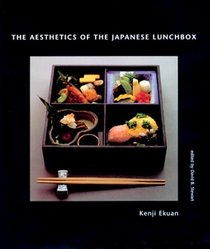Search -
The Aesthetics of the Japanese Lunchbox
The Aesthetics of the Japanese Lunchbox
Author:
The Makunouchi Bento, or traditional Japanese lunchbox, is a highly lacquered wooden box divided into quadrants, each of which contains different delicacies. It is also one of the most familiar images of Japan's domestic environment. When presented to the diner, the Japanese lunchbox seems straightforward enough; each of four food portions resid... more »
Author:
The Makunouchi Bento, or traditional Japanese lunchbox, is a highly lacquered wooden box divided into quadrants, each of which contains different delicacies. It is also one of the most familiar images of Japan's domestic environment. When presented to the diner, the Japanese lunchbox seems straightforward enough; each of four food portions resid... more »
ISBN-13: 9780262050555
ISBN-10: 0262050552
Publication Date: 6/12/1998
Pages: 208
Rating: ?
ISBN-10: 0262050552
Publication Date: 6/12/1998
Pages: 208
Rating: ?
0 stars, based on 0 rating
Publisher: The MIT Press
Book Type: Hardcover
Other Versions: Paperback
Members Wishing: 1
Reviews: Amazon | Write a Review
Book Type: Hardcover
Other Versions: Paperback
Members Wishing: 1
Reviews: Amazon | Write a Review
Genres:
- Arts & Photography >> Graphic Design >> Design >> General
- Arts & Photography >> Graphic Design >> Techniques >> General
- Arts & Photography >> History & Criticism >> Regional >> Asian
- Nonfiction >> Social Sciences >> Anthropology >> General
- Nonfiction >> Social Sciences >> Sociology >> General




